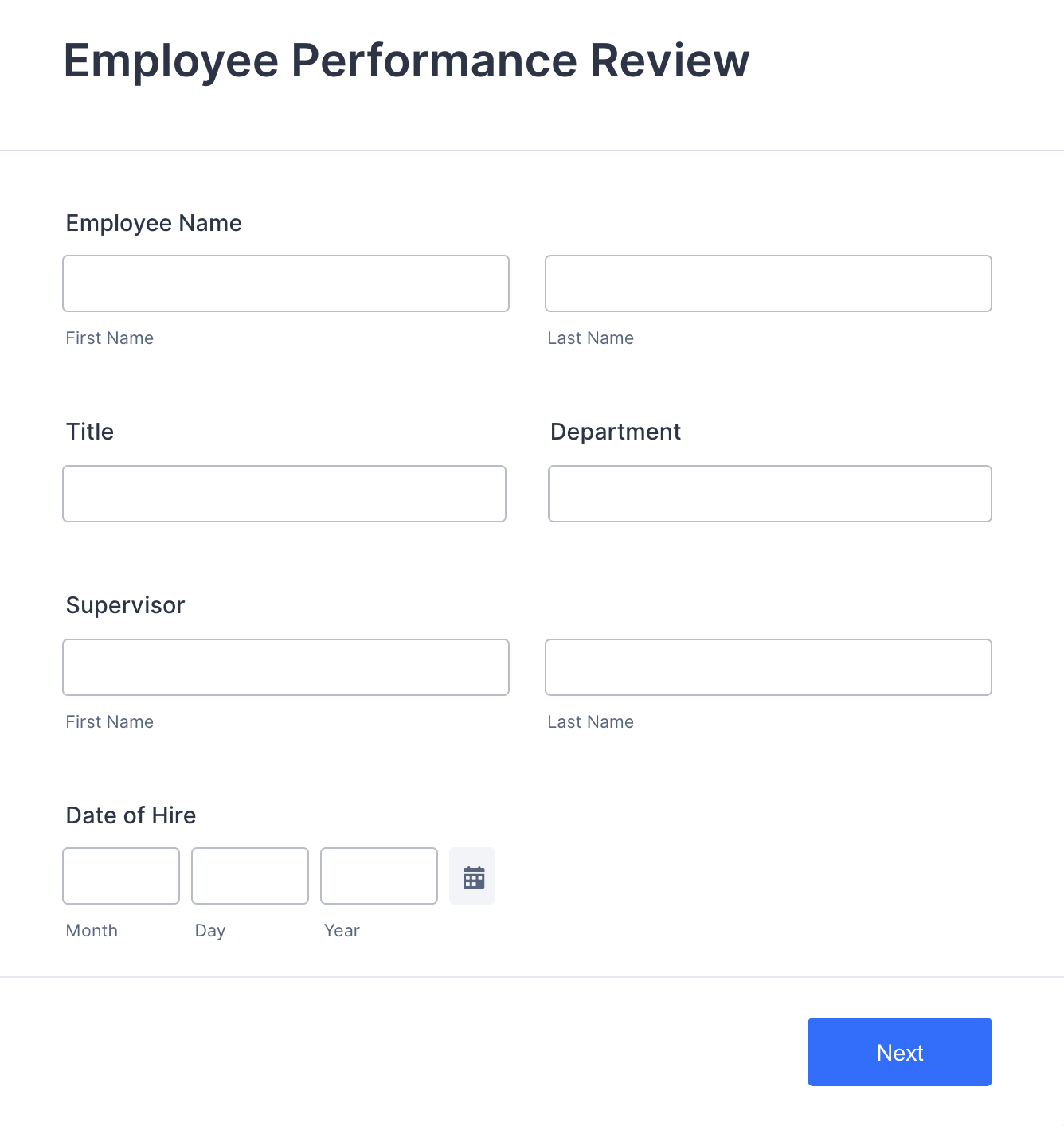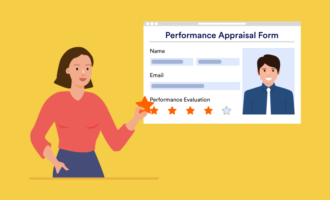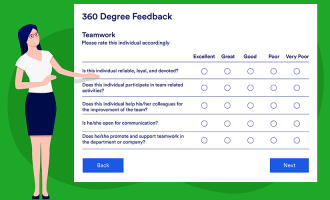Top 5 alternatives to performance reviews
Annual performance review — three words that can strike fear into the heart of any employee and conjure a big eye roll from managers.
That’s for good reason, because the traditional annual performance review has several disadvantages:
- Since it’s tied to past performance, the annual review puts too much emphasis on previous events and misses opportunities to provide valuable year-round feedback that employees can apply in real time.
- To employees, the traditional annual performance review can feel like a judgment rather than guidance on how to improve.
- Employees tend to dread the reviews and often feel anxious for days leading up to them, which can lead to reduced productivity.
- Because compensation is frequently tied to performance reviews, they can create a culture of fear.
- Companies often provide such little guidance to managers on how to conduct an effective performance review that the review doesn’t result in feedback either party can use effectively.
- The process can require days of prep time for managers and often doesn’t result in the desired behavior change.
But you have to assess employee performance in some way, right?
That’s where alternatives to performance reviews come in. Here are five options to consider if you’re looking for a better way to conduct employee reviews and improve performance.
Pro Tip
Change up your performance review practices and browse our free employee evaluation templates.
One-on-ones
Managers and direct reports can have informal one-on-one meetings weekly, biweekly, monthly, or at whatever frequency works best for the team.
Pros
- Real-time feedback and coaching means employees feel like leadership hears and values them.
- The manager and employee can address challenges as they come up, offering the opportunity for fast course correction.
Cons
- Because they’re informal, one-on-ones can make it challenging to measure progress against goals for each employee.
- Meeting multiple times with each employee throughout the year makes this a very time-consuming approach.
Jotform makes scheduling one-on-ones easy with our meeting room reservation form, or if the meeting needs to be remote, our schedule a Zoom meeting form is a great option. You can even organize all of your meetings using our calendar table templates.
Project-based reviews
Project-based reviews focus on the last project an employee completed, which means the review will be directly relevant to the work, rather than some arbitrary one-size-fits-all company standard. This type of review allows leadership to evaluate the employee and the team against objective project goals.
Pros
- Clearly defined objectives, scope, and deliverables make project-based reviews simpler to conduct and more effective for both manager and employee.
- By nature, project-based reviews happen more frequently, so the opportunity to reward good performance or improve weak performance can happen as needed, rather than just once per year on an arbitrary annual schedule.
Cons
- Project-based reviews can require a massive amount of time from both managers and employees, because they take place several times throughout the year as projects are completed.
- Some employees and teams may undertake just a few projects per year, while others might complete projects more frequently, leading to inconsistent feedback and evaluations across the company.
It’s simple to gather project information that you can apply to a project-based review using Jotform’s project tracker.
Continuous feedback
Continuous feedback provides employees with feedback throughout the year. Rather than waiting to address an ongoing issue in an annual review, continuous feedback can address challenges as they occur, creating a more effective workplace. This approach also provides more opportunities for giving positive reinforcement — which is often in short supply in many workplaces.
Pros
- Employees can address performance challenges throughout the year, making adjustments before problems become entrenched.
- Continuous feedback can improve collaboration, skills acquisition, and employee engagement.
- This type of feedback can provide a more accurate reflection of each employee’s contribution.
Cons
- Holding ongoing meetings with multiple employees each month of the year, keeping track of data, and measuring outcomes can be a time-consuming logistical nightmare.
- A continuous “feedback culture” takes time and effort to set up, and you’ll have to get buy-in from managers and employees. This can be particularly challenging if your company has been conducting a traditional annual review for many years.
Jotform offers 450-plus varieties of feedback form templates that you can format and fully customize to align with your needs. We also offer an employee feedback form, which is helpful for collecting data from employees and allowing them to share their comments, suggestions, and ideas.
360-degree reviews
The 360-degree feedback method allows employers to gather feedback from an employee’s managers and supervisors, peers, subordinates, and even company suppliers, clients, and customers. Because colleagues who interact with the employee at all levels evaluate their teammate, rather than a single manager, this method is often considered to be more objective.
Pros
- It presents a more complete picture of employee performance.
- Because there are multiple raters, there’s less chance of individual bias influencing the review.
- Feedback is often richer and more actionable because it comes from a variety of sources.
Cons
- This can be a time-consuming process that’s difficult to administer.
- 360-degree feedback tends to focus on employee weaknesses and shortcomings instead of strengths.
Jotform’s free employee performance review form makes it fast and easy to gather feedback and simplify the evaluation process.
Quarterly check ins
Quarterly check-ins are simply performance reviews that take place four times a year rather than annually. Because they occur more frequently, employees have more opportunities to improve and course-correct throughout the year, which creates much less stress than the universally dreaded annual review.
Pros
- This approach creates an opportunity for ongoing dialogue, which produces happier, more engaged, and more productive employees.
- These check-ins allow employees to take a proactive approach to their development and make ongoing improvements on a shorter timetable.
Cons
- Incorporating check-ins into the work schedule four times a year may feel overwhelming to busy managers.
- Quarterly check-ins often lack focus on long-term goals and objectives — potentially missing the big picture.
Schedule your quarterly check-ins with ease with our meeting room reservation form, or for remote meetings, use our form for scheduling a Zoom meeting.
Or visit our library of over 10,000 free online form templates or 300-plus free table templates to choose the form or table template that works best for you.
The annual review is an entrenched practice in many companies. While it may not be easy to turn the ship of tradition around and get buy-in for an alternative approach to performance reviews, the benefits can easily outweigh the costs.
Photo by airfocus on Unsplash






















































































Send Comment: